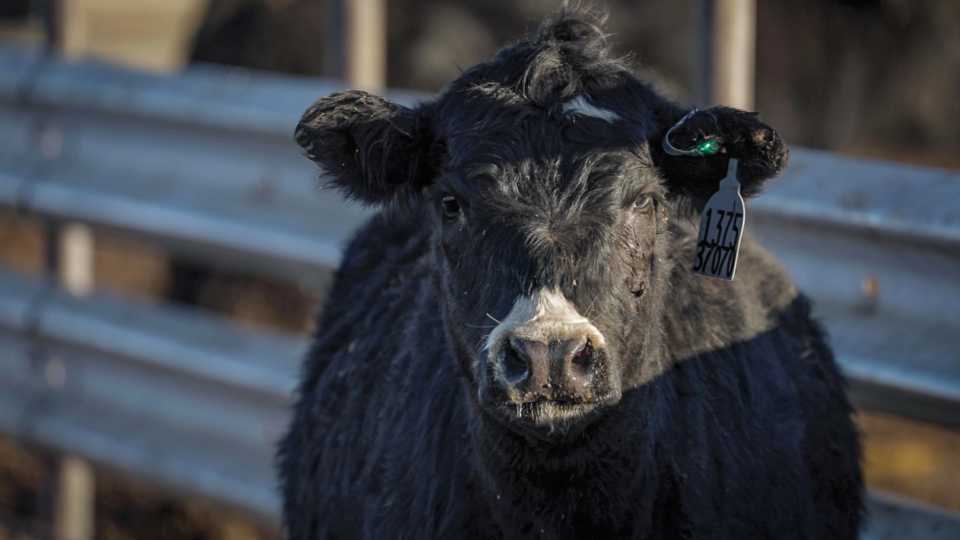Improved detection of sick cattle with SenseHub® Feedlot ear tag technology
By Dr. Jason Nickell
SenseHub® Feedlot, state-of-the-art technology from Allflex Livestock Intelligence®, is proven to detect sick cattle more efficiently and more accurately than traditional visual observation.
SenseHub Feedlot offers those who manage and care for cattle an innovative new approach to detecting illness, including bovine respiratory disease (BRD). The illuminating electronic ear tag makes it easy to identify and sort cattle needing attention with less labor and minimal disruption to other animals.
Cattle’s defense mechanisms mean they often hide symptoms of illness, making it very challenging for even experienced pen riders to find sick animals. SenseHub Feedlot assists the pen rider by removing the guesswork so animals can be pulled and treated more quickly and more accurately.

How SenseHub Feedlot works
The electronic ear tag tracks biometric data to monitor the health of each animal. Body temperature is captured by an infrared thermistor, and a built-in accelerometer measures animal activity. Using that collected data, SenseHub Feedlot applies proven machine learning algorithms to identify individual calves that vary from baseline norms.
Caregivers receive a daily pull list on their mobile device and/or computer that includes individual animals identified by the system for further assessment. In parallel, an LED light on the respective sick animals’ tags illuminates and flashes to assist the pen rider in identifying the animal. After an animal is pulled from its pen, the caregiver determines the cause – BRD, lameness or whatever the issue may be – and provides appropriate treatment as directed by their veterinarian.
Research proved SenseHub Feedlot reduces mortality and saves labor
Research at an Oklahoma feedyard showed that monitoring cattle with the SenseHub Feedlot system significantly reduced mortality due to BRD, compared with traditional pen rider observation. In the first 60 days on feed, BRD mortality was lower for cattle monitored with SenseHub Feedlot.
In addition, the Oklahoma trial demonstrated significant labor savings with SenseHub Feedlot. Riders who observed cattle visually entered an average of 18 pens per day, compared with only 5.3 pens per day on average when assisted by SenseHub Feedlot – a 71% reduction.
Even with “feedlot” in the product name, the product also has application in backgrounding (and possibly stocker operations) or cow/calf operations retaining calves. Current users of the technology have described SenseHub Feedlot as another employee monitoring cattle 24 hours a day, seven days a week. Additionally, they have reported lower overall treatment costs, less mortality, fewer retreatments, and improved treatment outcomes due to earlier intervention.
Implementing SenseHub Feedlot
SenseHub Feedlot requires minimal hardware and is easy to implement on most operations. It consists of the ear tag, which is reusable, and an antenna placed strategically on site. A gateway collects, stores, and sends data to a data platform. The system has a range of up to 2 miles.
This technology is another innovation from Merck Animal Health that enables cattle producers to monitor and gather real-time, actionable data to help them better care for and manage cattle. In times when labor supply is short, SenseHub Feedlot is even more helpful as it allows caretakers to more efficiently and accurately assess animal care needs, resulting in better outcomes for cattle and a positive impact to the bottom line for producers.
SenseHub Feedlot is now available as a part of a limited rollout, with plans to expand availability this summer. For more information on SenseHub Feedlot, visit SenseHubFeedlot.com.
Find more content for your beef operation.
About the author

Dr. Jason Nickell, D.V.M., Ph.D., DACVPM
Director of Insights and Outcomes,
Merck Animal Health
